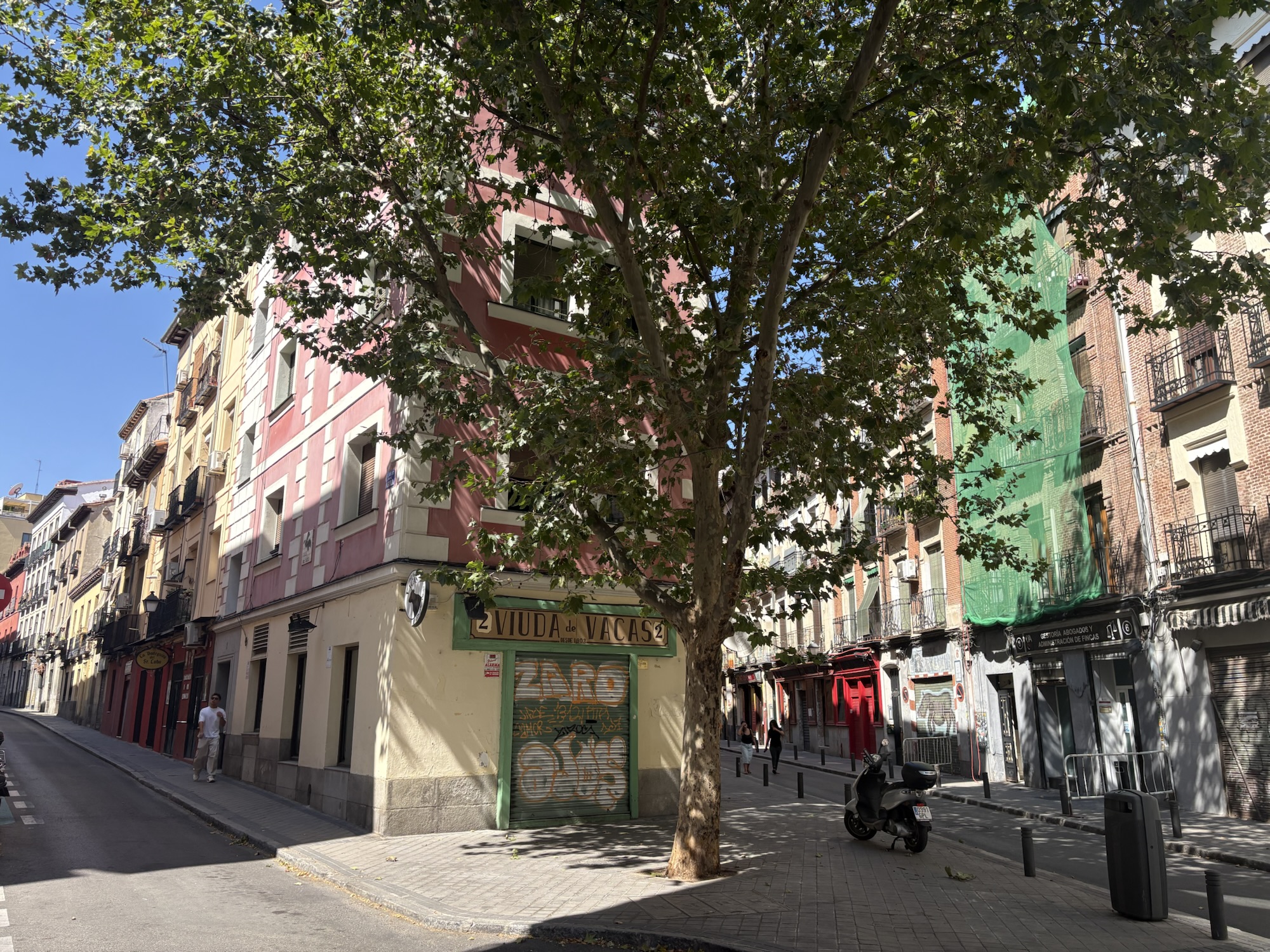Dreaming of a move to Spain? Whether you’re planning to work remotely, retire in the sun, or study in one of Europe’s most beautiful countries, there’s a visa for that. Spain offers multiple visa options for non-EU citizens, including Americans, and understanding your choices is the first step toward living abroad. In this post, I’ll break down 5 common ways to get a Spanish visa, explain what they’re best for, and help you figure out which one might fit your lifestyle.
1. Spain Digital Nomad Visa
The Spain digital nomad visa is probably the most common visa type that I see here in Spain. This is a great option for remote workers to get a visa in Spain — and they actually just broadened the criteria in 2025 to include contractors and W-2 employees. This is huge, because it means you can keep your full time work contract in your country of origin and work in Spain.
For this visa type, the majority of your professional activity has to be performed for clients/contracts outside of Spain, with no more than 20% of your work being performed for Spanish clients. This is because they don’t want you taking the job of a Spanish citizen.
The income requirement for this role is approximately €2,600/month or more, and you must have your business or current work contract for at least 3 months in order to apply. If you’re just getting started on your own business, create a customer base in your home country before you move due to the 20% rule mentioned above.
In order to be eligible for this visa type, you must show stable remote income & remote work contract(s) as part of the process.
While this is a very common and relatively flexible path to Spain, there are a few cons you should be aware of. Digital Nomads are taxed at a much higher rate (about 40%), and it requires a lot of paperwork and red tape to get and renew the visa.
When you arrive in Spain, landlords tend to be hesitant to rent to Digital Nomads out of fear that they could pick up and leave at any moment. For this reason, you often have to pay bigger deposits or pay for 4-6 months up front, which is very difficult for most people to do. It’s possible to find landlords who are more lenient, but this narrows down your options.
Get the latest information regarding Digital Nomad visa requirements, here.
2. Spain Student Visa
If you’re wondering how to study in Spain, this is a great option to start your life abroad. You can get a Spain student visa for a language school, university, au pair, voluntary internship, or study abroad program under this visa type.
Note that this visa type does not grant you work authorization. This is a major downside for most people who need to continue making income abroad.
For this visa, you must show enrollment with a program meeting the criteria above, and the financial means to support yourself during the duration of the program. With this visa, your spouse and children will also be granted approval to come with you if you are approved.
Commonly called the “auxiliar program” or NALCAP, this one is great because it gives you a window at the end of your studies to get a job in Spain, where you can then find a permanent job with a work visa. While it doesn’t work out 100% of the time, it’s a good opportunity to establish yourself in Spain long-term if that’s what you desire.
Click here for the latest information!
3. Spain Work Visa or Highly Skilled Worker Visa
While the Spain work visa or employment visa can be difficult to find, it’s one of the smoothest routes you can take to get abroad.
For the Spain employment visa, you must have a job offer and visa sponsorship from a Spanish company. If you work for an international company that has an entity in Spain (they don’t need a physical office, just enough employees here to create an “entity”), you can also transfer to a Spanish contract if your company allows it. This is what I did since I work for an international company with a presence here in Spain, and it made the path much smoother to have the company involved in the process.
The name of the “Highly Skilled Worker Visa” can be intimidating, but in my humble experience, it’s highly subjective. If you can make the case on why you’re highly skilled including your academic record, work experience, and special skills or certifications, you can likely make a solid case for yourself. I work in Marketing Communications and was able to get the visa with the help of my employer.
The downside is, since the visa requirements are so subjective, there’s no real rhyme or reason as to why you could get denied. If they don’t deem your experience as “skilled enough”, you may not get approved. It can be frustrating, but for this reason, I’d highly recommend getting a lawyer to facilitate the process.
For more on my personal story or the exact steps I took to get the work visa, check out my recent blog posts.
4. Spain Non-Lucrative Visa (Retirees or Sabbaticals)
The Spain non-lucrative visa is great if you want to retire in Spain or take a gap year. Since this visa type does not grant work authorization, this is great for those who don’t need to work.
With this visa type, no income from Spanish sources are allowed.
The income requirement is equivalent to 400% of Spain’s Public Multiple Effects Income Indicator (IPREM), which is essentially a cost of living index. You must add 100% of the IPREM for each additional family member who will be joining you. For context — in 2025, the Spanish IPREM is about €600 per month, making the income requirement €2,400/month + your dependents.
You can renew this visa type into residency over time, offering a path to citizenship if that’s your goal.
Read more about the non-lucrative visa, here.
5. Spain Golden Visa (Property Investment)
While this certainly isn’t an option for everyone, maybe it’s an option for you or someone you know! Money talks, and this offers a quick way to get to Spain if you invest in Spanish real estate.
To get the Golden Visa, you must invest €500,000 in Spanish real estate. Ideal for investors and part-time European residents, this visa has no requirement for you to live full-time in Spain. This allows you the flexibility to move between Spain and your home country as often as you’d like. This visa also includes residence for your spouse and children, and offers a fast-track to Spanish citizenship.
For more on the Golden Visa, read here.
Which Visa Option is Right for You?
| Visa Type | Difficulty | Work Allowed? | Duration |
| Digital Nomad | Easy/Medium | Yes | 1 Year with Renewal Option |
| Student Visa | Easy | No | Length of Program |
| Work Visa | Hard | Yes | 3 Years with Renewal Option |
| Non-Lucrative Visa | Easy | No | 1 Year with Renewal Option |
| Golden Visa | Easy (if you have the means) | Yes | 1 Year with Renewal Option |
Final Thoughts
While Spain offers multiple different immigration paths, there’s no “one size fits all” approach. Each situation is unique, and even in straight-forward applications it still takes quite a bit of time and planning.
If you’re ready to make the leap, I would highly recommend hiring a good immigration lawyer here in Spain. They’ll help you decide which option makes the most sense, and talk through the pros and cons together.
Once you choose your visa path, the rest becomes much easier. The requirements and paperwork can seem intimidating, but I promise it’s nothing that you can’t handle. Spain is notoriously bureaucratic, slow, and unclear in their directions, so my advice is to be thorough. Make sure you have the appropriate notaries and translations on all required paperwork, and cover your bases with backup copies. The best thing you can do for yourself is plan ahead!
Read my first-hand account of what it takes to apply for a visa in my ultimate guide to moving abroad.
So, what visa type are you exploring? If you’ve moved abroad, what advice do you have for people starting the process? Let me know in the comments!
Want more from Everyday Abroad? Subscribe to our newsletter to get the latest moving abroad tips, travel guides, and freebies straight to your inbox!




